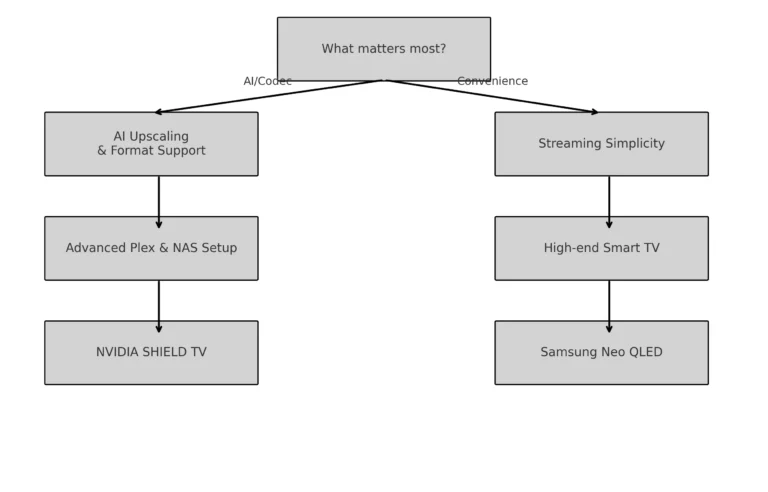When it comes to AI-powered 4K upscaling, two paths dominate the market: external streamers like the NVIDIA Shield TV Pro and built-in upscaling engines in modern smart TVs. But which delivers better results — a dedicated AI streaming box or a high-end TV with integrated AI processing?
In this comparison, we explore how the Shield TV Pro stacks up against top-tier TVs from Samsung, Sony, and LG in terms of AI upscaling performance, flexibility, smart features, and real-world use.
Technology Comparison: Shield vs Smart TV Processors
| Device | AI Engine / Chip | OS | AI Upscaling Method |
|---|---|---|---|
| Shield TV Pro | NVIDIA Tegra X1+ | Android TV | AI-enhanced resolution model |
| Samsung Neo QLED QN90C | Neural Quantum Processor 4K | Tizen OS | Neural scene recognition |
| Sony Bravia XR A80L | Cognitive XR Processor | Google TV | Scene-aware focal enhancement |
| LG G3 OLED | Alpha 9 Gen6 | webOS | AI Picture Pro + Scene Detection |
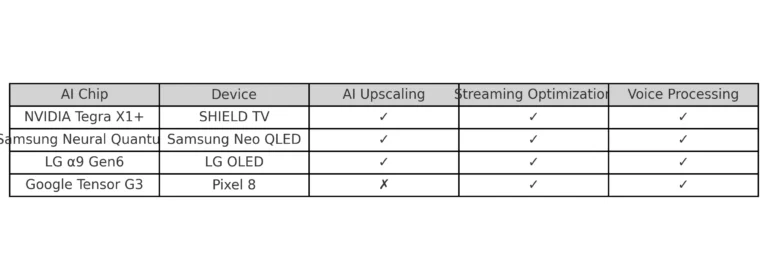
AI Upscaling Results: Real-World Tests NVIDIA Shield TV Pro
Sharp improvement on YouTube 720p and 1080p videos
AI model learns over time via firmware
Works across Netflix, Plex, Kodi, YouTube, and VLC
Samsung Neo QLED
Strong face enhancement + lighting detection
Works best on dynamic content (sports, YouTube vlogs)
Great for scene-by-scene Netflix upscaling
Sony XR OLEDs
Most accurate motion handling
Highlights faces and text
Less aggressive sharpening — preserves filmic look
LG G3 OLED
Cleanest edge enhancement
Impressive for cartoons, documentaries, anime
Adaptive rather than aggressive — subtle improvements
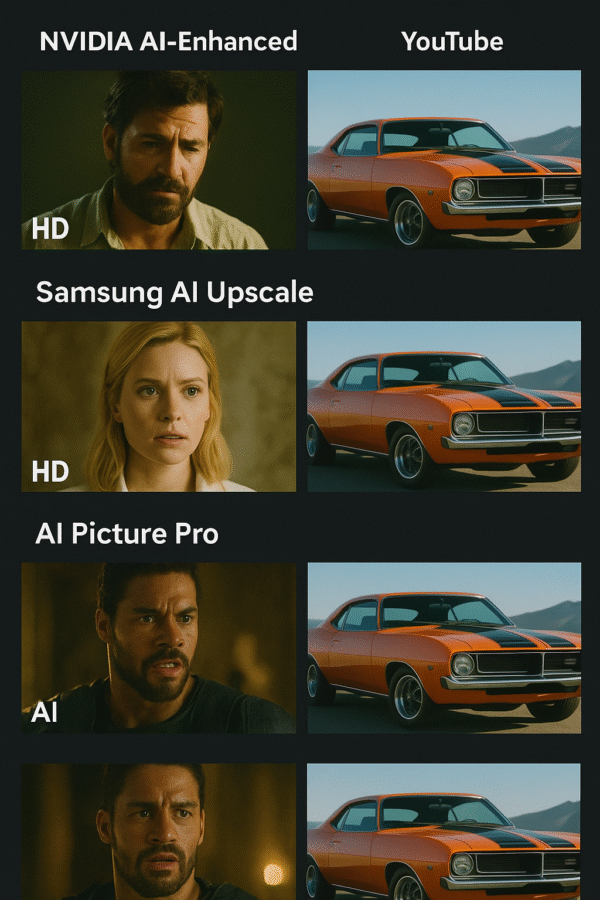
Streaming App Flexibility
Feature | Shield TV Pro | Samsung QN90C | Sony A80L | LG G3 OLED |
| Works with external storage | ✅ | ❌ | ❌ | ❌ |
| Plex Server Capability | ✅ | ❌ | ❌ | ❌ |
| Custom AI Toggle | ✅ Adjustable | ❌ | ❌ | ✅ Adaptive only |
| Google Assistant | ✅ Native | ✅ Built-in | ✅ Built-in | ✅ Built-in |
The Shield TV Pro wins for customization and compatibility — especially if you stream from a NAS, use Plex, or sideload apps.
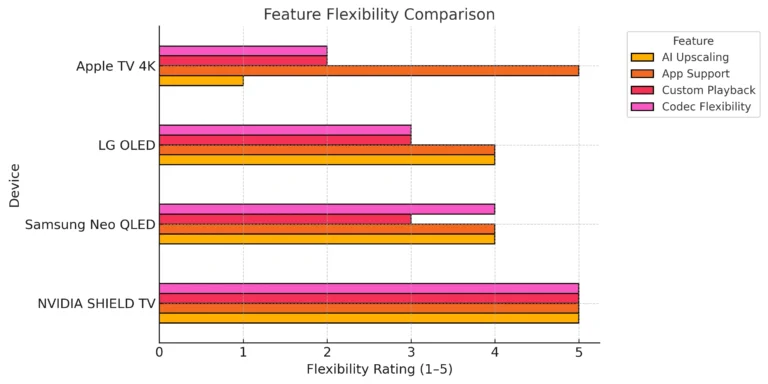
Use Cases: Who Benefits Most?
Shield TV Pro
Cord-cutters using Plex
Users with older 4K TVs lacking AI upscaling
Home theater enthusiasts who want AI + Kodi/Plex/YouTube mix
AI Smart TVs
All-in-one users who prefer fewer devices
Streaming-focused viewers who rely on Netflix, YouTube, Prime Video
Viewers prioritizing content-specific visual enhancement
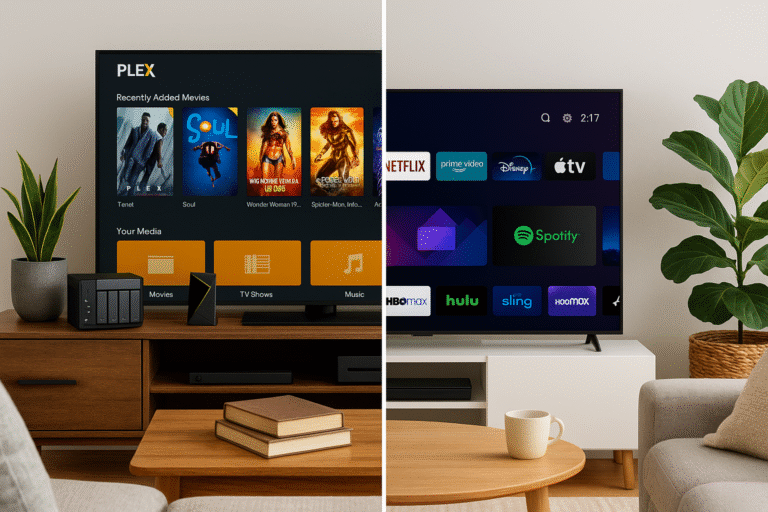
Pros & Cons Summary NVIDIA Shield TV Pro
Pros:
Adjustable AI upscaling levels
Broad codec and app support
Great for retro gaming + Plex
Cons:
Requires a 4K TV to function
Additional device in setup
Smart TVs (Samsung/Sony/LG)
Pros:
Sleek, all-in-one solution
Great voice control and home dashboard integration
Netflix/YouTube optimized AI modes
Cons:
Limited upscaling control
No file-based playback flexibility
Verdict: Which One Should You Get?
Choose NVIDIA Shield TV Pro if:
You want upscaling across all your apps — not just native smart TV ones
You care about tweaking upscaling intensity
You have a 4K TV that lacks advanced AI upscaling
Choose a Smart TV if:
You’re buying new and want built-in AI
You primarily use built-in apps like Netflix or YouTube
You want voice assistant integration with minimal cables
